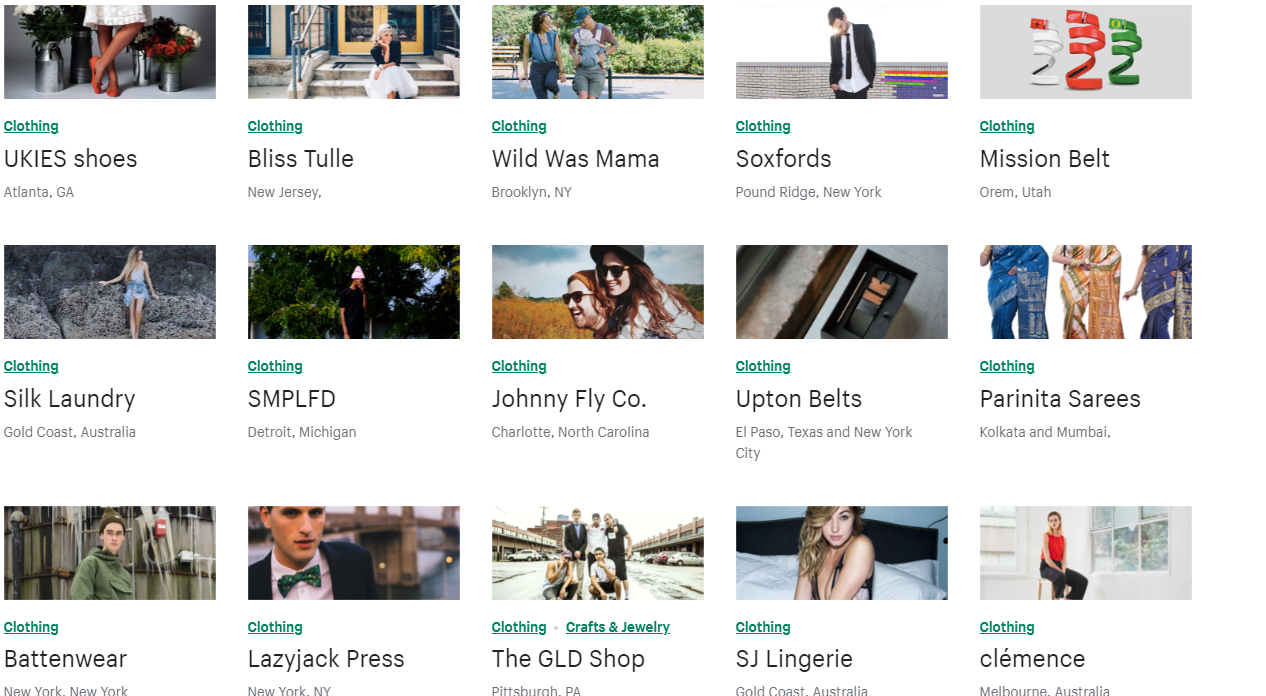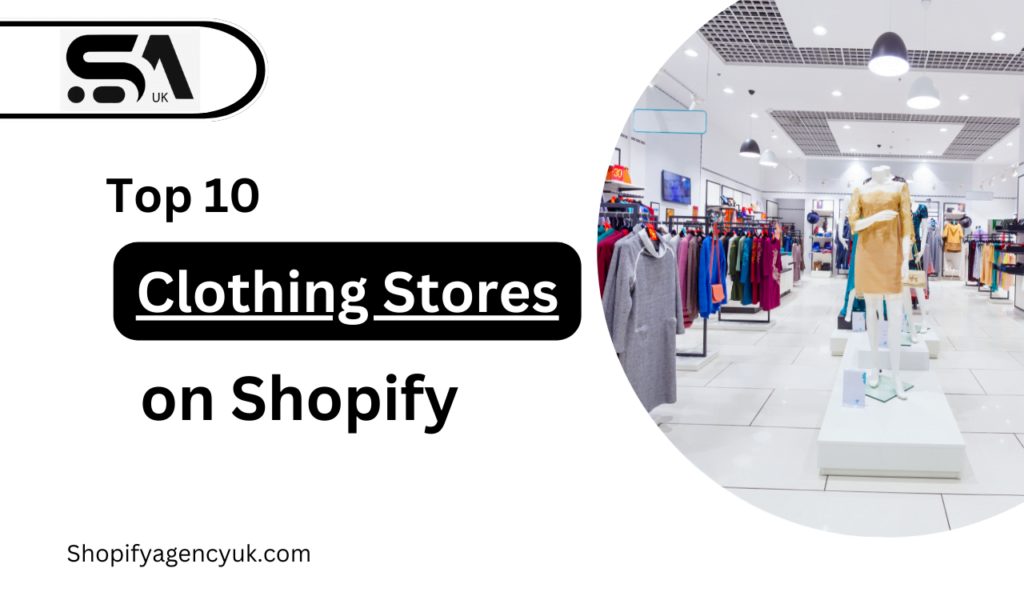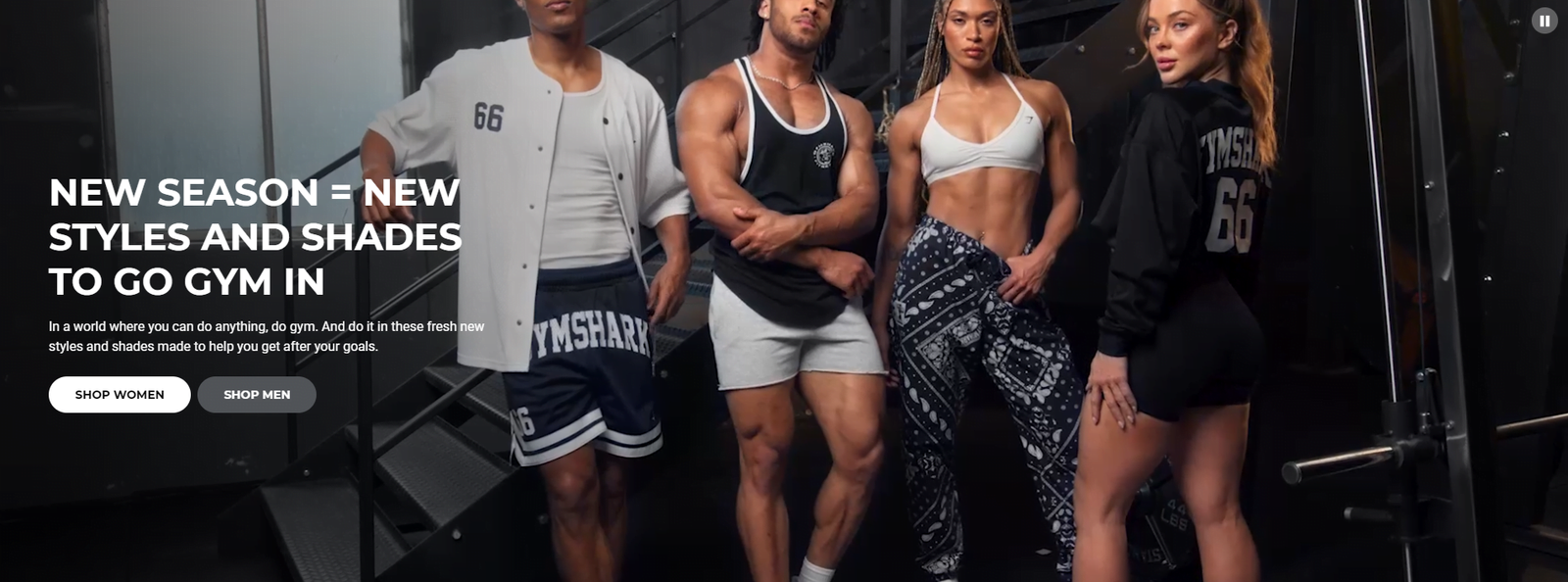Introduction
Shopify has long been ranked as one of the best e-commerce platforms for any entrepreneur who wants to create an online store, especially those selling clothing items, since fashion belongs in this only 500 billion dollar a year global industry with 4% annual growth.
Due to its ease of use, flexibility, and scalability, many fashion entrepreneurs choose Shopify’s Top 10 Clothing Stores on Shopify as their primary platform. Shopify does an incredible job of providing everything you need to create a visually appealing and feature-rich online store.
A few key highlights of these advantages are built around a user-friendly interface, which, paired with the company’s extensive suite of API and app integrations, can help you get set up quickly. The site also offers vast support resources, making it an excellent site for fashion businesses looking to expand into international commerce.
Throughout this blog post, we will introduce the finest Shopify top clothing stores in different categories, discuss how to label your clothes on the Shopify store, and explain why schema product data SEO is critical for enhancing the visibility of suitable products.
Why Should You Go to the Shopify Clothing Store?
Due to its ease of use, flexibility, and scalability, many fashion entrepreneurs choose Shopify’s Top 10 Clothing Stores as their primary platform.
Shopify does an incredible job of providing everything you need to create a visually appealing and feature-rich online store. A few key highlights of these advantages are;

Theme Customization:
Shopify provides customizable theme options to give you the appearance and aesthetic.
App Integrations:
Everything from inventory management to marketing automation is available on Shopify’s app store, allowing you to run the business seamlessly using resources with a few clicks.
Shopify Clothing Stores
1. Gym shark
Gym Shark, the stylish fitness apparel brand, has used Shopify to create e-commerce success stories. Gym Shark has top-notch The Best Clothing Stores on Shopify with a modern website design, superior product images, and an intuitive shopping process. They do a great job of using Shopify’s various features to manage inventory and orders and engage with their customers.
Image Source: gymshark.com
2. Fashion Nova
Fashion Nova: Fashion powerhouse famous for its chic, cheap clothes. Custom Cosplay Costumes Shopify store is optimized for mobile shopping, ensuring customers an easy-to-navigate and purchase consumer experience. Fashion Nova uses schema product data SEO to make its products feel special.

3. All birds
All Birds is an example of how one can use something like Shopify for e-commerce if internet sales are in the future. The website has a clean fabric style, detailed product descriptions, and client ratings. All of them have a schema to better rank in search results.

4. Kylie Cosmetics and Kylie Skin:
Shopify Success Story: Combined with effective branding, engaging marketing, and successful partnerships within the influencer community, customers flock to this store, which is designed for beauty fanatics. The beauty brand uses particular analytics and reporting tools available on Shopify, which is one reason why Kylie Cosmetics constantly improves its sales strategies as soon as possible. Clothing Labelling in Shopify Store.

Titles and descriptions of the products
Use Specific Titles:
Create specific product titles that include your product’s color, size, and style. For example, “Men’s Black Slim Fit Jeans” is more descriptive than simply calling it “Black jeans.”
Vivid Descriptions:
You must provide clear and detailed information about your product, including the materials used, color, size, etc. This can help customers feel confident in their purchases and reduce returns.
Tags:
This is an ideal way to sort your products. Tags can consist of your descriptors, so include “summer collection,” “new arrivals”, or, best sellers”. This makes it easier for consumers to sort and identify products.
Collections:
Organize like products into collections that help make them easier to browse. For example, you may have collections for “Men’s Clothing,” “Women’s Clothing,” and possibly an “Accessories” collection.

Schema Product Data SEO
Schema Product Data SEO can dramatically improve the visibility of your product in search engines. When a search engine crawls your site, it may gather more data about the products you sell with schema markup – e.g., price, availability, and reviews. Now, you can show off your product listings in search results and attract the right people to visit them.
Get Started with Schema Markup in Shopify
Follow the below steps to implement schema markup in your Shopify store:
- Opt for a schema markup tool: Tools include the Google Structured Data Markup Helper or Schema App to make schema markups around your products.
- When you get the schema markup code, it must be added to your Shopify theme..
Step 3: Visit your Theme page, select Edit Code, and then drop the schema markup code into the most suitable template files ( e.g., product. liquid, collection. liquid).
- Schema Markup Testing.
- Check your schema markup with Google’s Rich Results Test to ensure the schema is implemented and eligible for search.
- How to start a clothing Store on Shopify
- Creating a clothing store on Shopify requires several stages so the launch has maximum balance. Here’s a step-by-step guide:
-
Sign Up for Shopify
- Open the Shopify website and create an account. Then, provide some basic information about your business and the pricing plan that is best for you.
-
Choose and Customize a Theme
- Choose a theme that will match your brand’s theme, available at Shopify Theme store. Theme style to match your brand colors, fonts, and scheme. Make Your Website Easy to Navigate and Mobile-Friendly
- Add Your Products
- How to Optimize: Product Listings with High-Quality Images, Descriptive Titles, and Lengthy Description Details of sizes, fabrics & care instructions.
- Paragraphs: Specify your contemporary product prices and keep stock of products. Tracking stats reveal when stock is getting low or when you are anticipating fresh orders of goods encroaching, enabling one to plan more effectively through alerts provided by Shopify.
- Configure: Your Payment & Shipping Choices
- Configuration: Payment Gateways to enable payment from the customers. These are credit cards, money payments, and other payment systems such as PayPal, which Shopify supports.
- Search Terms: Use search terms that target your product. Embed these into the products’ titles, descriptions, and meta tags.
- Schema Markup: Add schema product data SEO to create a more attractive listing in search results.
- Start A Blog Blogging: fashion tips, style guides, and industry news. This can attract people to your store and increase sales in the process, which will eventually rank you high on search engines.
- Launch and Promote Your Store
- Launch: After you finish the early processes and are satisfied with everything, go live.
- MARKETING Share on social media, email marketing, or Paid advertising to promote your store and attract customers. When you create a broad audience, get help from bloggers and influencers.
Conclusion
Creating a great Shopify clothing store requires adequate planning, strict measures of effectiveness, and even basic SEO techniques. You can use lessons from Shopify’s most successful clothing stores to set up your store—complete with properly labeled clothes and schema product data SEO—likely attracting customers who keep coming back, thanks partly to streamlined online shopping. If you are starting or trying to improve your current store, try these tips and reach your e-commerce goals. Happy selling!
FAQ
Q1: What in the heck can I do to make sure my Shopify clothing store is SEO-friendly?
A: You know, right now, a Shopify store should have SEO-friendly product descriptions, image optimization with alt text, and a faster site loading speed than light. Also, consistently post on your blog and link to build your way to increasing site authority.
Q2: The best clothing stores on Shopify that have found success stakes in their online world of selling clothes?
A: Gym Shark, All Birds, and Kith are successful Shopify Apparel Merchants. These brands have used the platform’s functionality to create visually appealing, easy-to-navigate websites that draw in customers for repeat business.
Q3: How Can I Enhance the Customer Experience In My E-commerce – Shopify Clothing Store?
A: Enrich customer experience with accompanying product information, followed by good-quality images and testimonials. Provide great customer service and a simple and secure one-click checkout process, ensuring your site is mobile-friendly.
Q4: How scalable can one expect to grow one’s clothing store on Shopify?
A. It is built for growth, so yes, it can scale. As you develop a store, you can change your Shopify plan to explore new advanced features and levels of support.
Q5: How important is the Mobile Optimize Shopify Clothing Store?
A: With a large percentage of consumers shopping on mobile devices, it is essential to optimize for mobile. Responsive store design, fast load times, and a smooth mobile shopping experience will help to capture and encourage repeat purchases from mobile shoppers.
Q6: Is Shopify good for selling internationally?
A: Yes, Shopify for international selling will provide you with multi-currency support, multi-language support, and global shipping. It helps you address a wider audience, expanding your business globally.
Q7: How Much Does Making a Clothing Store on Shopify Cost?
A: Your monthly Shopify subscription, transaction fees, and domain registration will mainly be your costs.
Q8: What Should I Do with the Returns and Exchanges in my Shopify Clothing Store?
A: Returns & Exchanges – This best practice concerns implementing a returns and exchanges policy that can be automatically managed with Shopify. Some apps make the return process easier by providing pre-printed return labels and can also handle automatic inventory updates.

